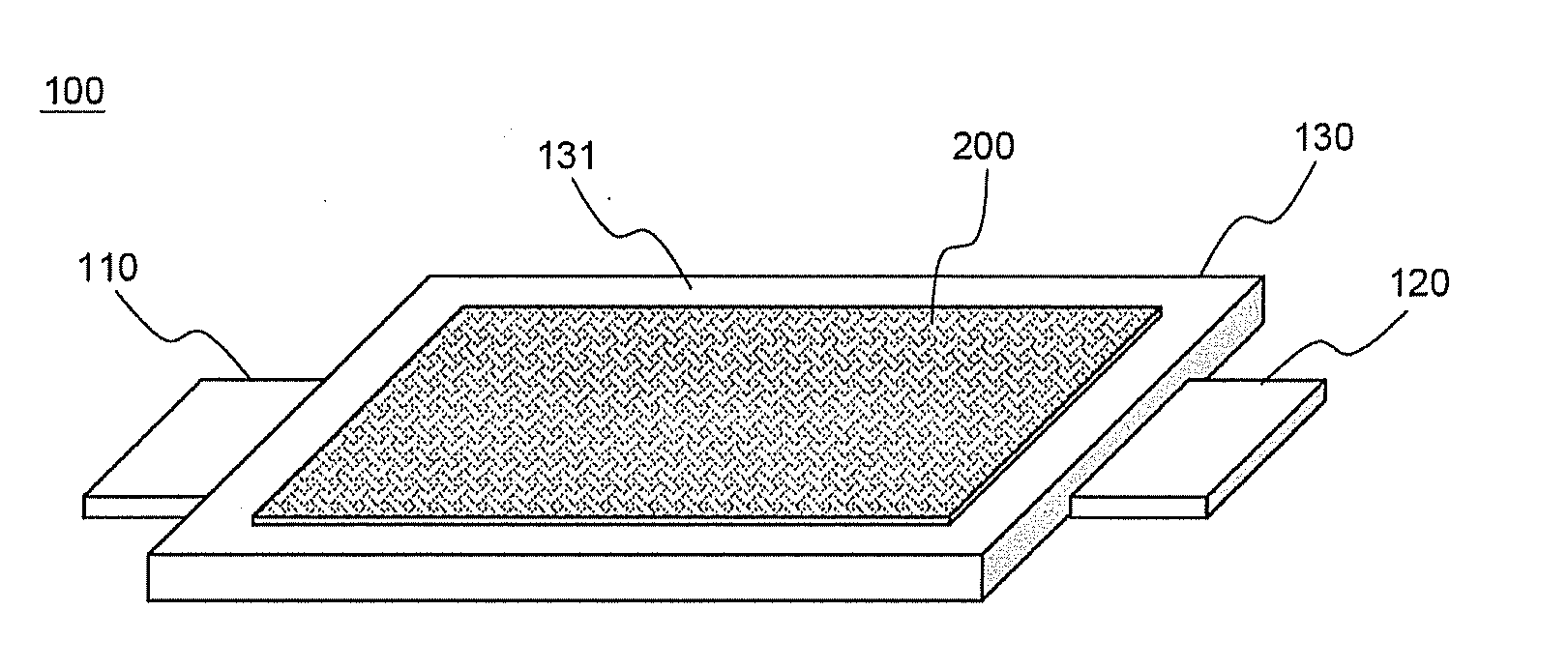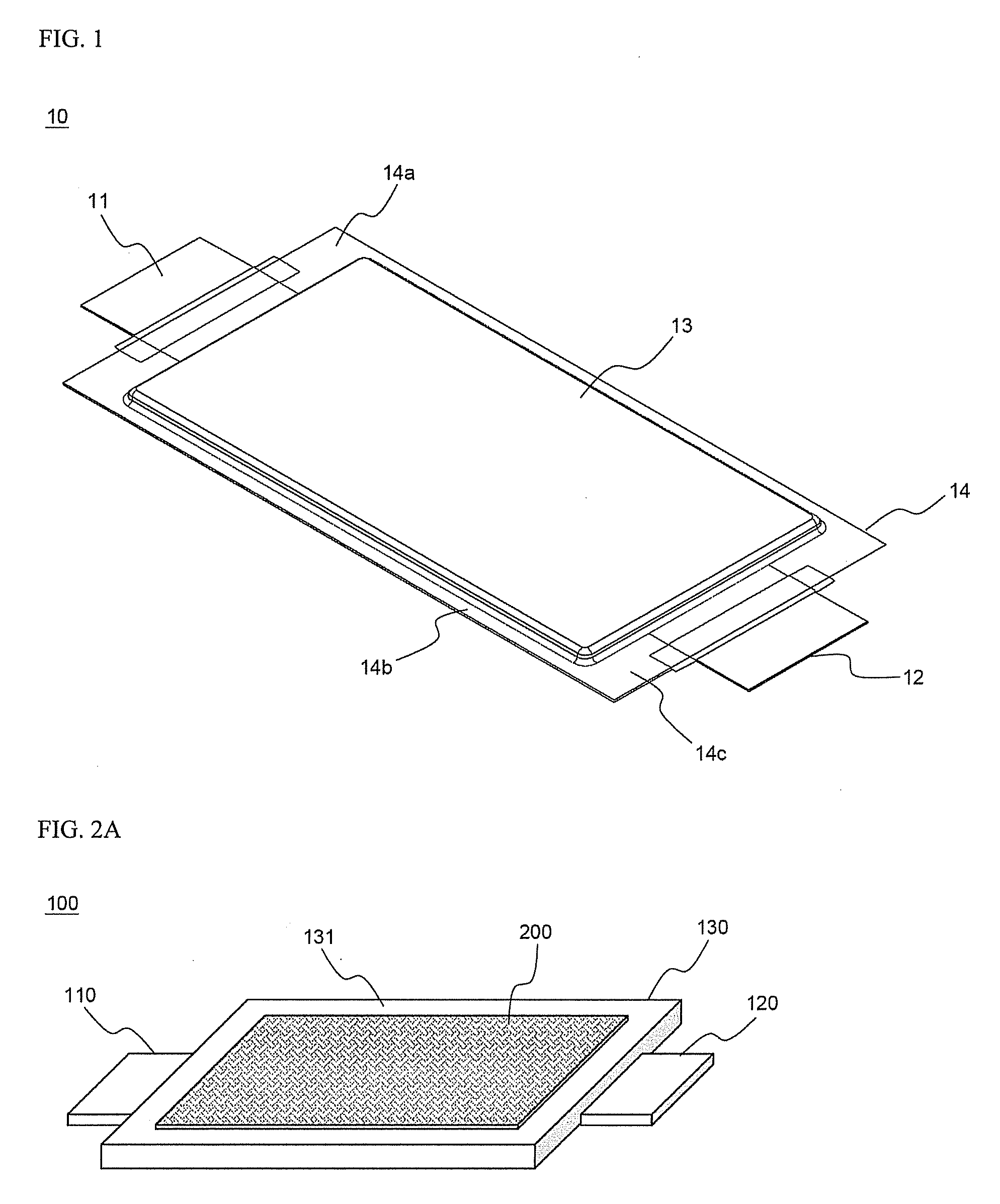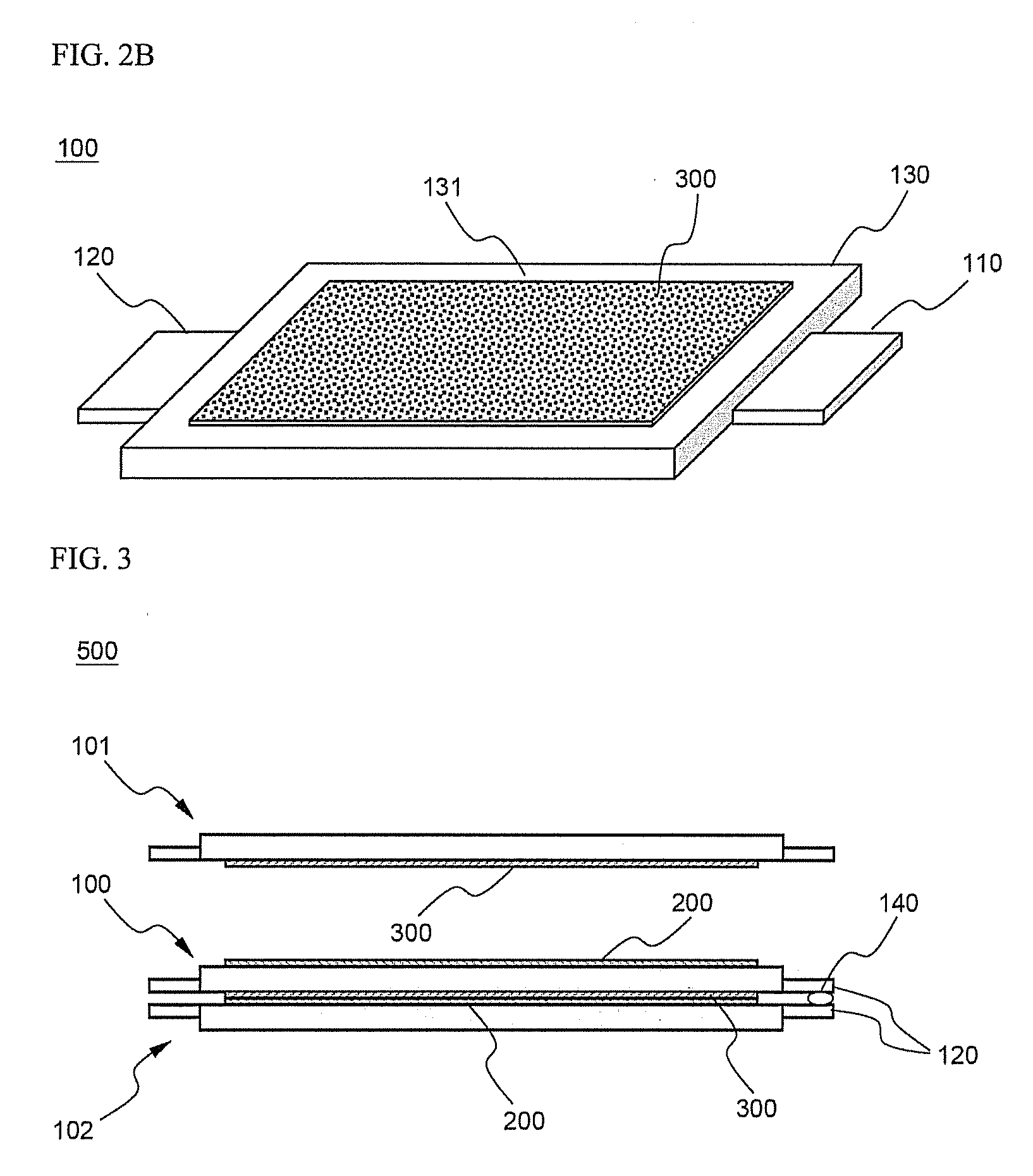Battery module having the attachment members between battery cells
a battery module and battery cell technology, applied in the direction of batteries, flat cell grouping, sustainable manufacturing/processing, etc., can solve the problems of reducing the adhesive strength deteriorating the adhesiveness of the attachment member, and not maintaining the stacked structure of the battery cell, etc., to achieve high discharge voltage, high energy density, and high output stability
- Summary
- Abstract
- Description
- Claims
- Application Information
AI Technical Summary
Benefits of technology
Problems solved by technology
Method used
Image
Examples
example 1
[0029]A mixture including 95 weight percent of LiCoO2, 2.5 weight percent of Super-P (a conducting agent), and 2.5 weight percent of PVdF (a coupling agent), as a cathode active material, was added to NMP (N-methyl-2-pyrrolidone), as a solvent, so as to manufacture cathode mixture slurry. Subsequently, the cathode mixture slurry was applied to aluminum foil, which was dried and pressed to manufacture cathodes. Similarly, a mixture including 95 weight percent of artificial graphite, 2.5 weight percent of Super-P (a conducting agent), and 2.5 weight percent of PVdF (a coupling agent), as an anode active material, was added to NMP, as a solvent, so as to manufacture anode mixture slurry. Subsequently, the anode mixture slurry was applied to copper foil, which was dried and pressed to manufacture anodes.
[0030]CellGuard™ was used as separators. The cathodes, the anodes, and the separators were sequentially stacked to construct an electrode assembly. The electrode assembly was mounted in ...
experimental example 1
[0033]The battery modules manufactured according to Example 1 and Comparative example 1 were put in a Z-axis vibration test to confirm the coupling between the batteries (a vibration test). The test result revealed that the battery module manufactured according to Example 1 exhibited little difference as compared to before the Z-axis vibration test, whereas the battery module manufactured according to Comparative example 1 exhibited positional deviation of approximately 10% between the respective batteries constituting the battery module as compared to before the Z-axis vibration test.
[0034]Also, the battery modules manufactured according to Example 1 and Comparative example 1 were put in high-temperature and high-humidity conditions, i.e., a temperature of 60° C. and a humidity of 90%, for seven weeks to confirm the coupling between the batteries (a weathering test). The test result revealed that the battery module manufactured according to Example 1 exhibited little difference as ...
PUM
 Login to View More
Login to View More Abstract
Description
Claims
Application Information
 Login to View More
Login to View More - R&D
- Intellectual Property
- Life Sciences
- Materials
- Tech Scout
- Unparalleled Data Quality
- Higher Quality Content
- 60% Fewer Hallucinations
Browse by: Latest US Patents, China's latest patents, Technical Efficacy Thesaurus, Application Domain, Technology Topic, Popular Technical Reports.
© 2025 PatSnap. All rights reserved.Legal|Privacy policy|Modern Slavery Act Transparency Statement|Sitemap|About US| Contact US: help@patsnap.com



